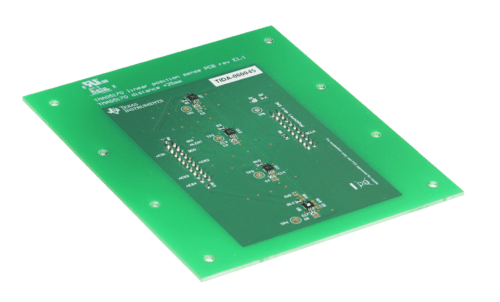Explore a design for linear position sensing with 3D Hall-effect sensors, providing accuracy, speed, and reliability in a compact package.

Linear position sensing with Hall-effect sensors is widely used in applications such as linear servo drives, proximity switches for factory automation, and linear motor transport systems.
In these systems, either the sensor head with a Hall-effect sensor moves over a static magnetic stripe with multiple poles, or a magnetic target moves over a stationary Hall-effect sensor or an array of them.
TIDA-060045 is a reference design from Texas Instruments (TI) that showcases precise, low-latency linear position sensing of an N45 magnet target using one or more 3D Hall-effect sensors placed equidistantly.
The system operates with a high-speed 10 MHz SPI, transmitting the Z-axis and X-axis magnetic field strength and CRC data in a single 32-bit frame for low latency and improved data integrity.
The 3.3V I/O digital interface is compatible with the MCU LaunchPad, enabling easy evaluation of our 3D Hall-effect sensing technology with C2000, Sitara, or other MCUs.
Applications include linear motor position sensing, servo drive position sensing, general position sensing, and proximity switching.
The single-chip 3D Hall-effect sensor integrates an ADC and SPI interface, reducing the BOM and PCB size. This compact design helps streamline production while maintaining high functionality.
Linear position accuracy is typically ±0.15mm over a 100mm range, contributing to more precise control in linear motor transport systems.
Engineers can achieve linear position accuracy of ±0.15mm over a 100mm range, supporting more precise control in linear motor transport systems. The sensors offer configurable sensitivity from ±25mT to ±100mT and ±75mT to ±300mT, providing flexibility to optimize the measurement range and accuracy for specific applications. With sample rates up to 8 kHz, a low latency of 57.5 µs, and the 10 MHz SPI interface, these sensors support high-speed position control, ideal for dynamic applications.
The reference design also features a dedicated ALERT pin, allowing for simultaneous start-of-conversion across the X, Y, and Z axes in multiple 3D Hall-effect sensors, enhancing synchronization and efficiency.
Additionally, the built-in diagnostics help engineers detect and report system and device-level failures, ensuring excellent reliability in the final design.
A high-precision linear 3D Hall-effect sensor suitable for a broad range of industrial and personal electronics applications is used in this reference design. Its high integration level provides flexibility and accuracy for various position-sensing systems.
The device includes three independent Hall-effect sensors for the X, Y, and Z axes. A precision signal chain and an integrated 12-bit ADC ensure accurate and low-drift magnetic field measurements, supporting sampling rates up to 20 kps.
Additionally, on-chip temperature sensor data is available to help with system-level drift compensation.
TI has tested this reference design. It comes with a bill of materials (BOM), schematics, assembly drawing, printed circuit board (PCB) layout, and more. The company’s website has additional data about the reference design. To read more about this reference design, click here.








